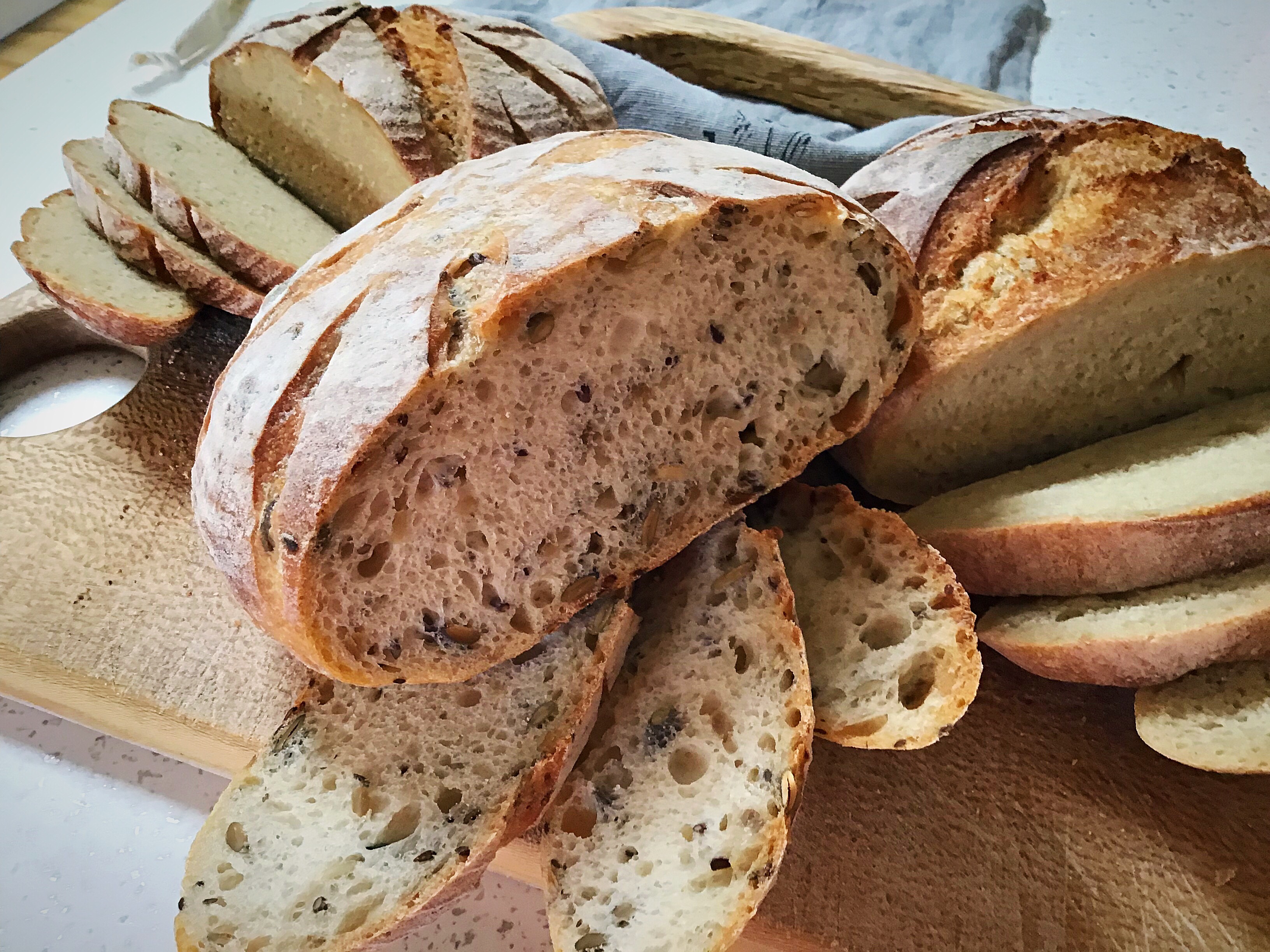
These loaves have been made using my starter and a variety of white spelt flour, kamut/khorason flour, and mixes of the two.
These were experimental to test how the flours would hold up on their own for use in sourdough so this post is to share the outcome. I’ve used both spelt and kamut flour in loaves that included strong white bread flour with great success and flavour, which you can find in my recipe index; this time I wanted to test them out on their own to see how they behaved.
Please note: these loaves were all made with a smaller banneton which is 17cm diameter and 7.5cm deep. This allowed me to use less flour in these trials. The quantities are included at the end of the post.
And: I’ve used my same starter in all of them, fed the usual way with strong white bread flour; you don’t need different starters for different loaves.
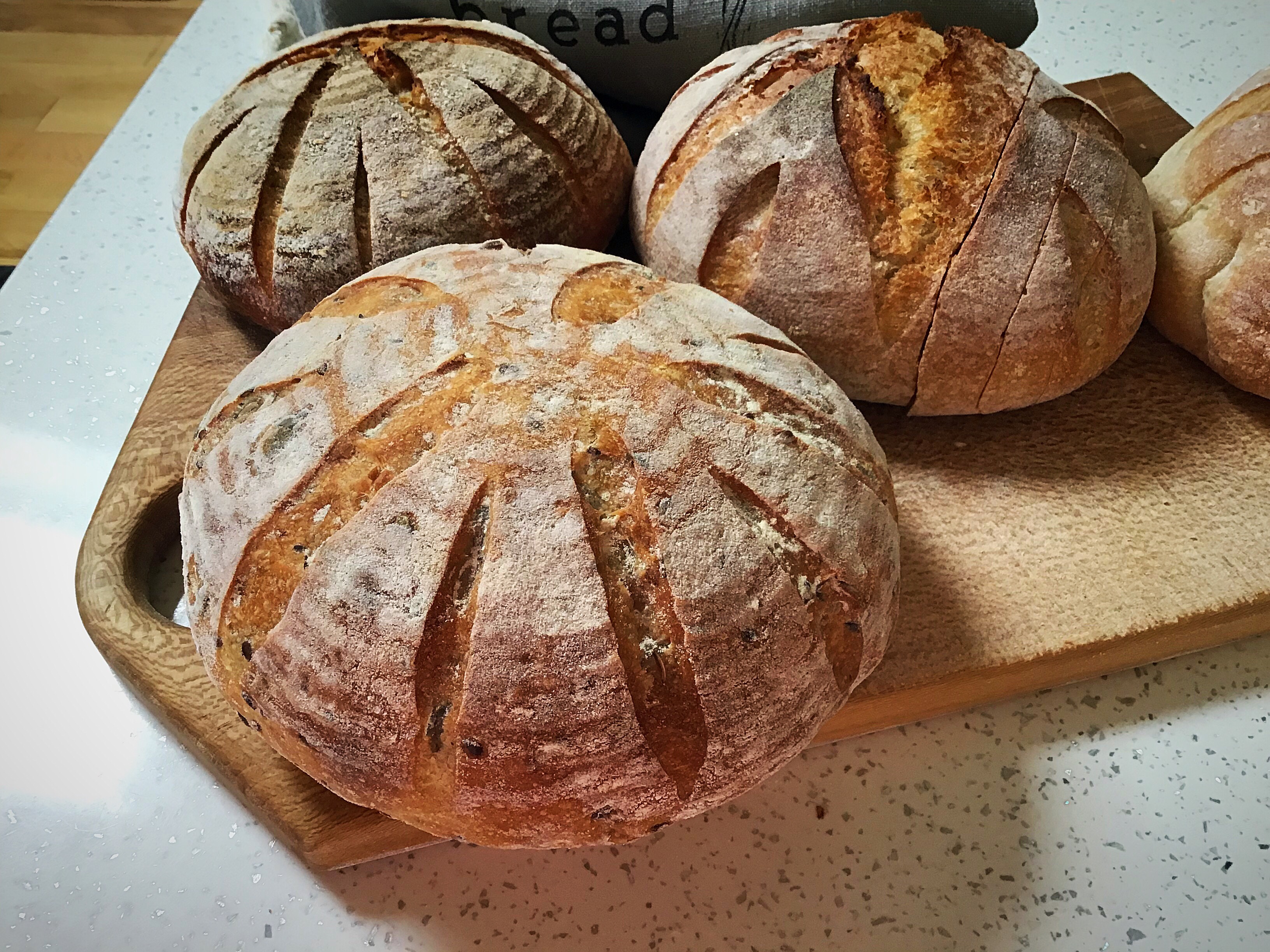
Firstly, let me talk about the actual flours themselves; these are milled from ancients grains. Spelt and khorason (kamut is actually the brand name, the entire grain has a brand!) are wonderfully tasty grains that are lovely and nutty and chewy to eat in their naturally grown form once cooked, I eat them a lot this way.
The flours are milled from those grains.
Being ancient grains, they are quite different from more modern flours, and very different from one another, so considerations have to be taken when using them in your sourdough.
White spelt flour is very soft, it’s a lovely fine gentle flour. It therefore struggles to hold its form if used 100% for a free form loaf such as sourdough because it is not a very strong flour, the protein level is less than 11%, and so it benefits from additions to give it strength to hold its shape. I found that when used on it’s own for a loaf, it still created a lovely dough, it rose well, it baked nicely, the crumb was lovely and light, but it was a bit unevenly shaped once baked. I know from past experience that spelt does not hold its shape so I chose to bake it in a smaller pan (20cm diameter as opposed to me usual 26cm diameter enamel roaster) to give it the benefit of the sides of the pan to stop it from spreading, which it needed. The cut slice shows the shape more.
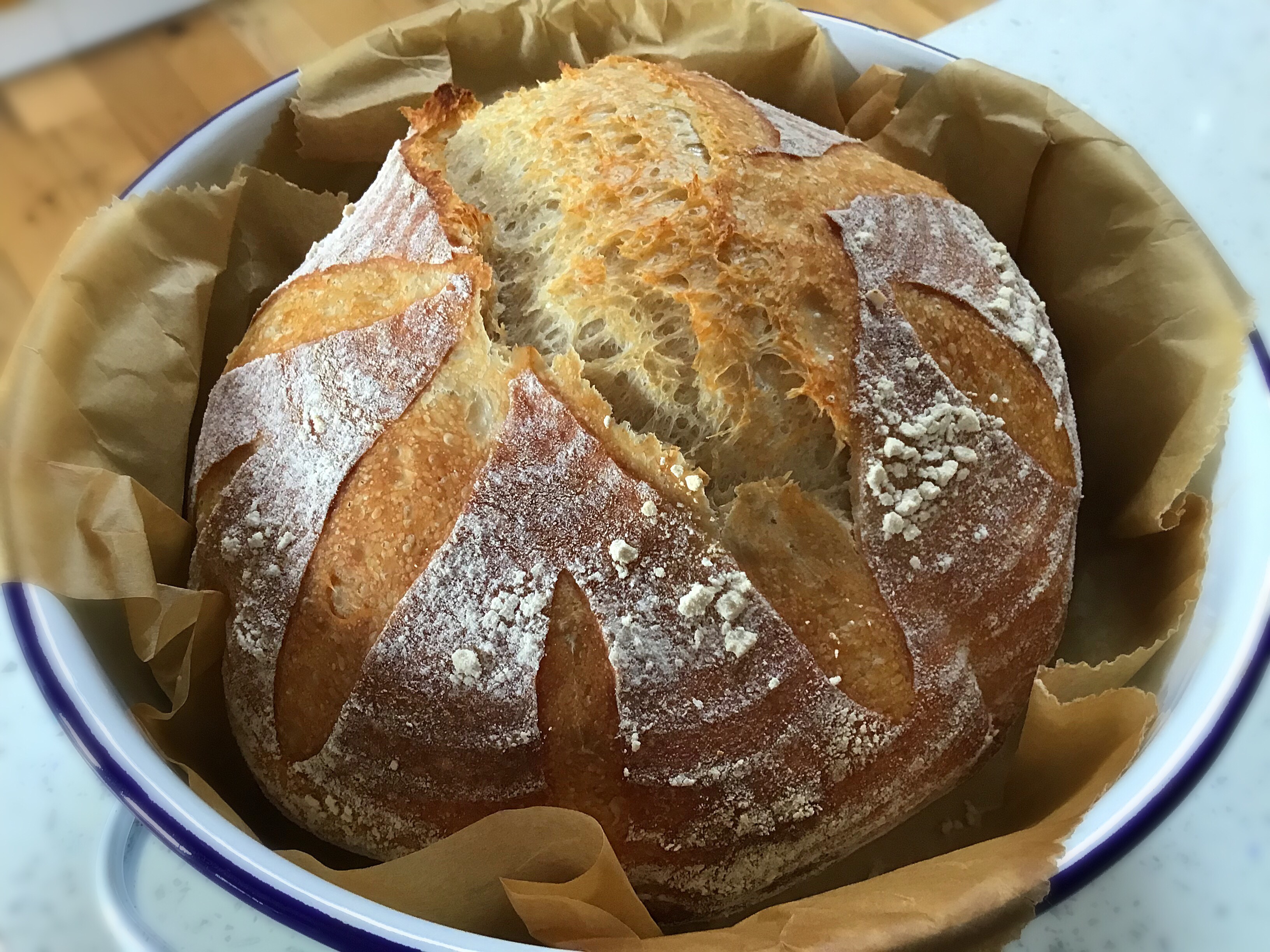
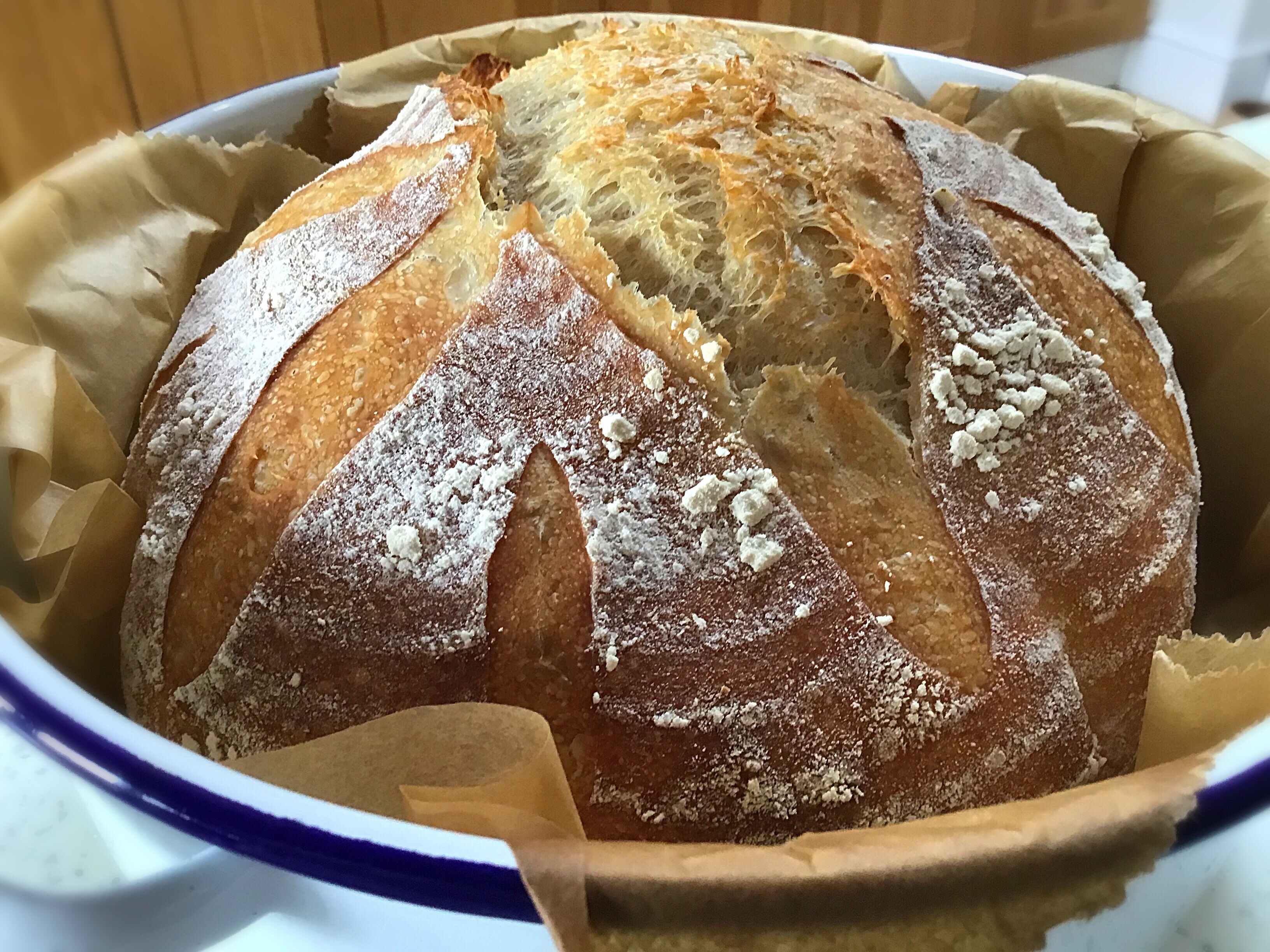
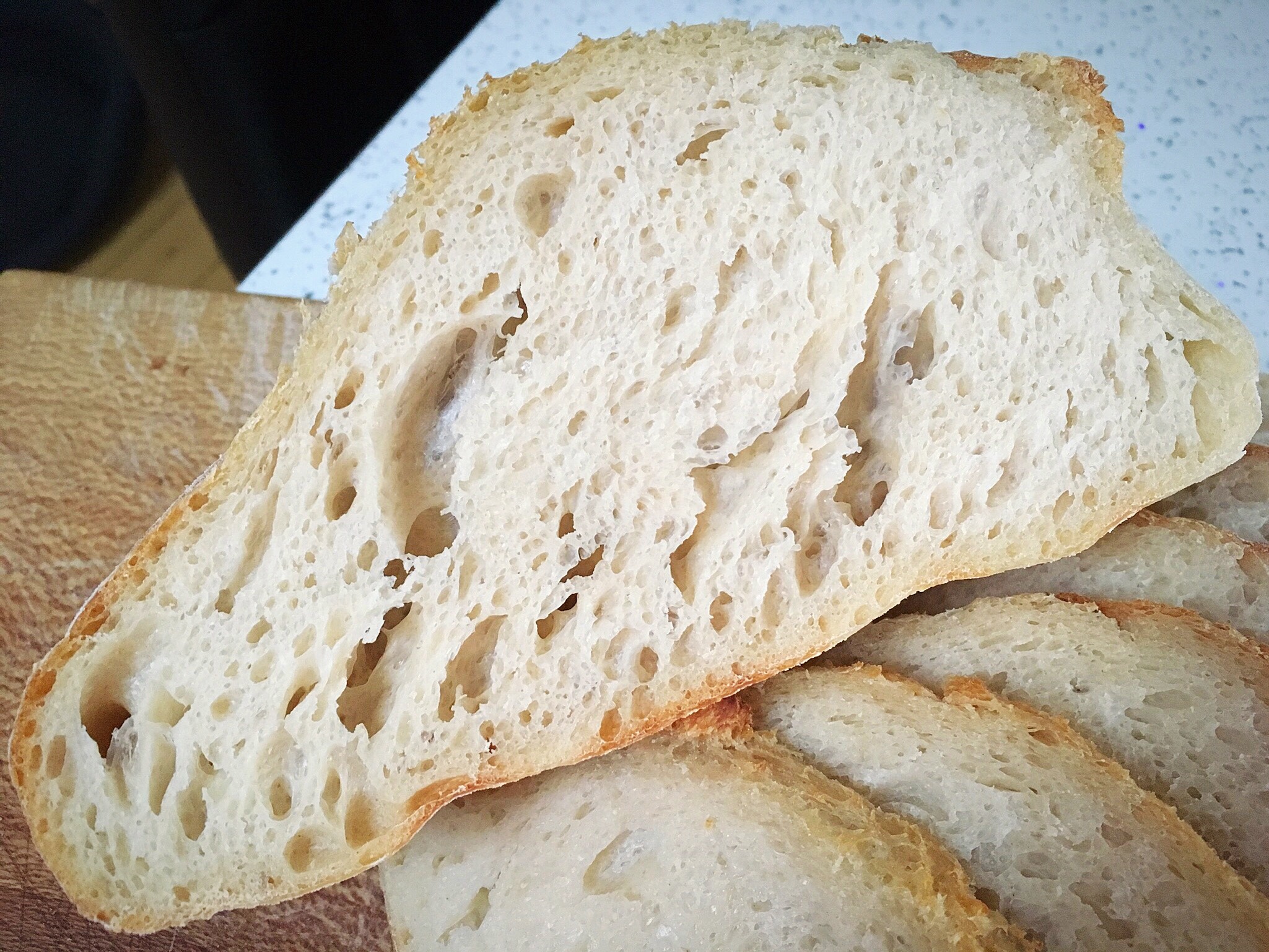
Once I added seeds to the dough, it was a whole different story: they gave the dough structure and it held its shape perfectly, hence being able to use a bigger pan.
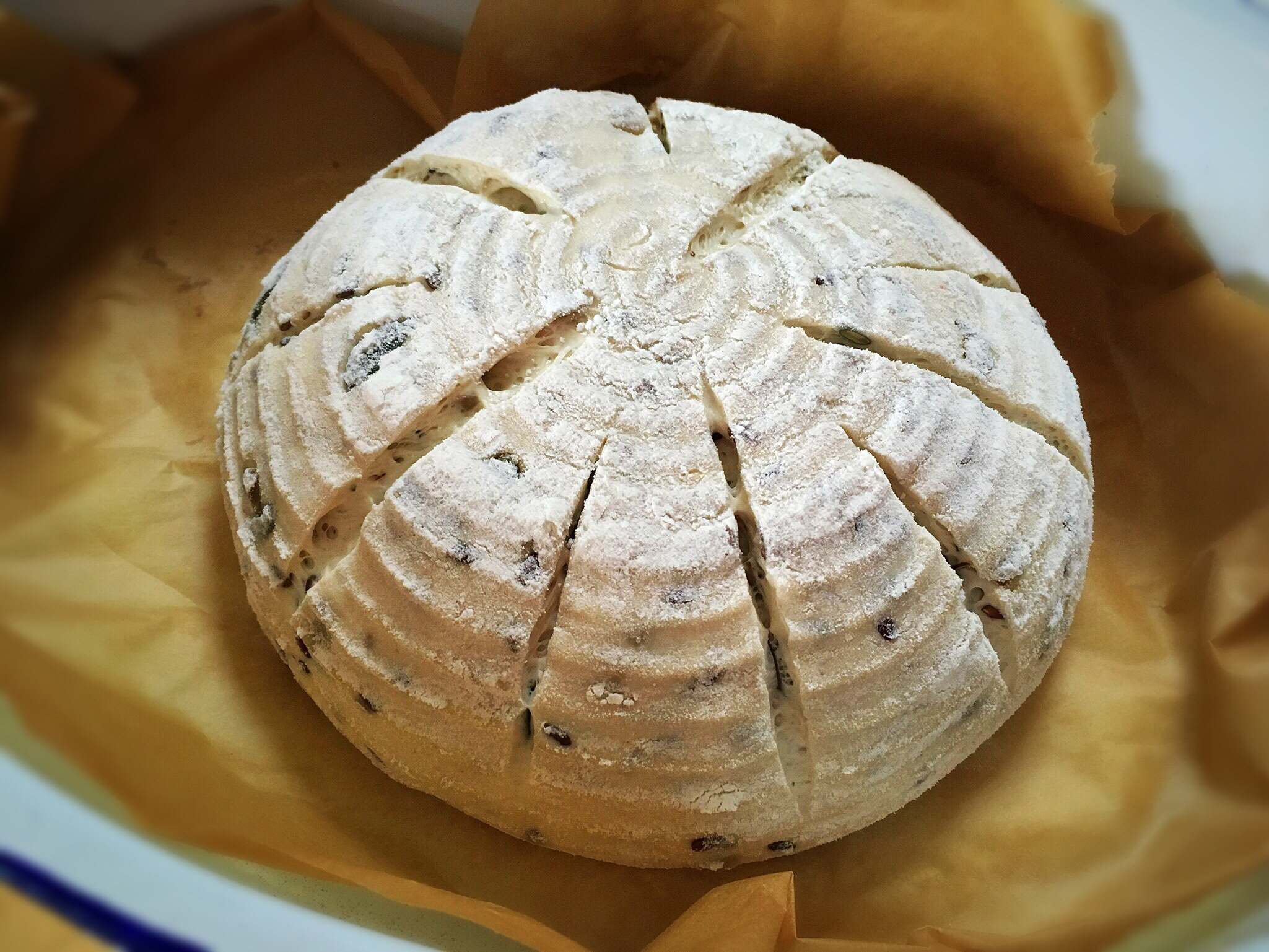
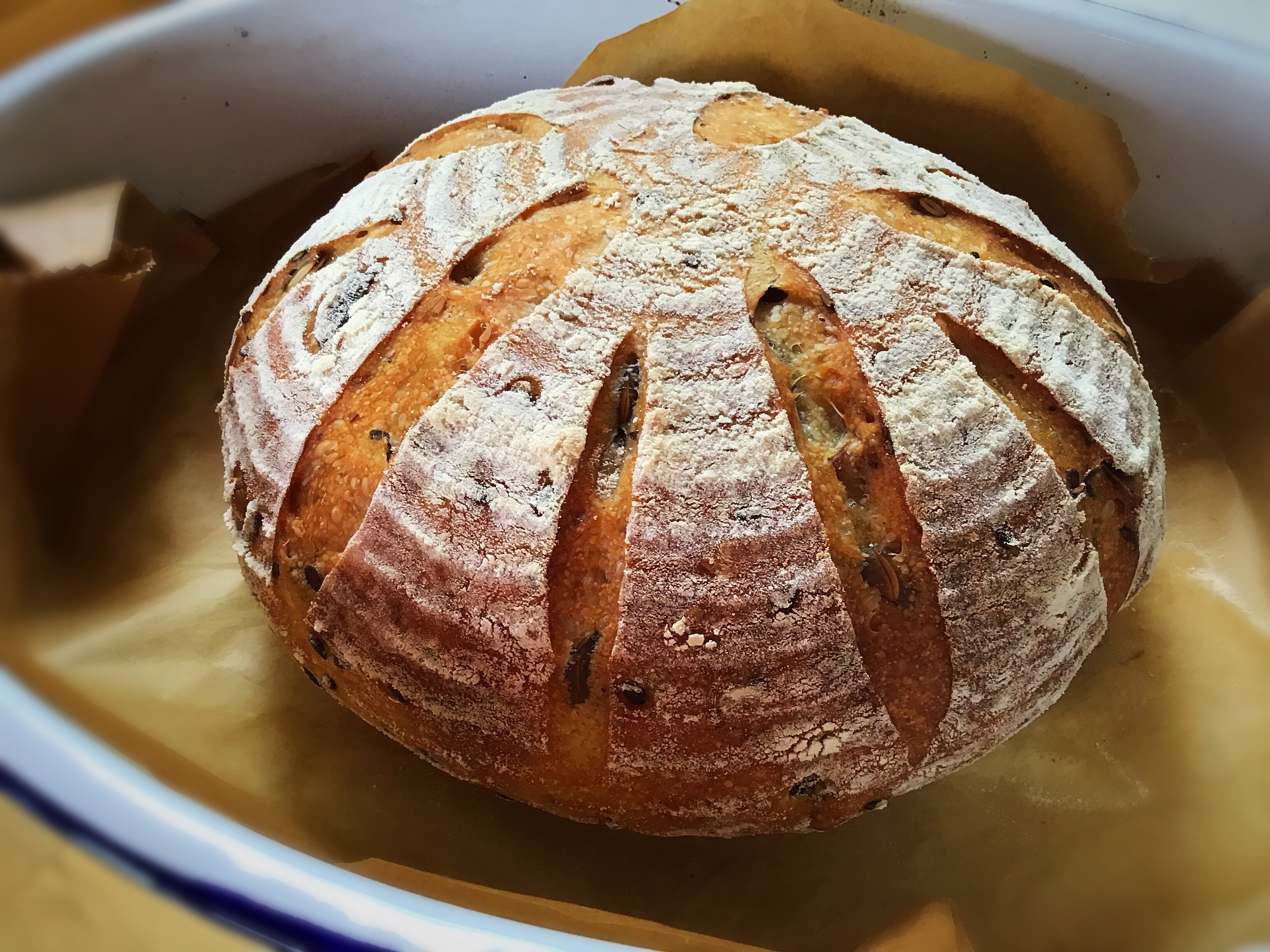
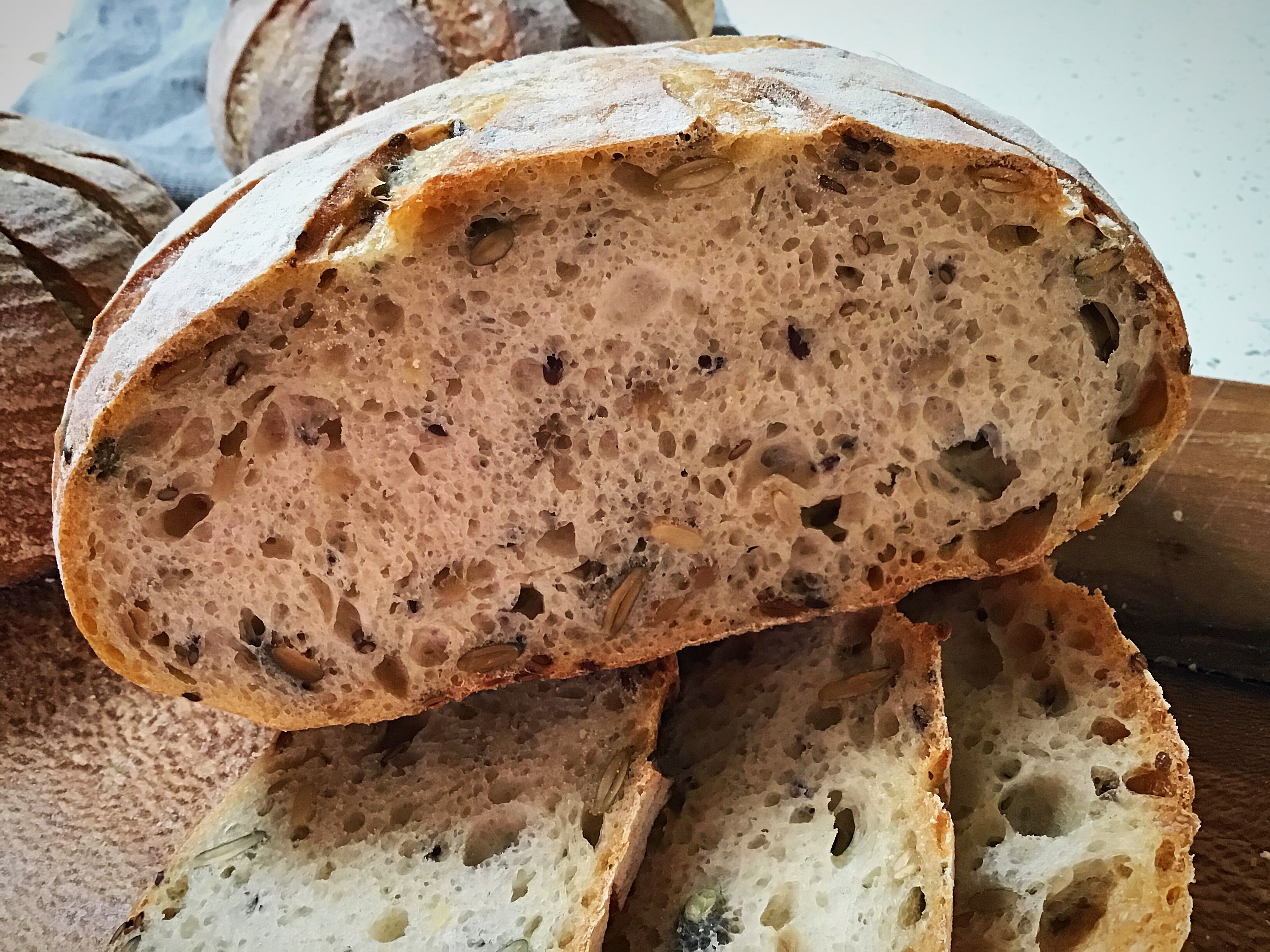
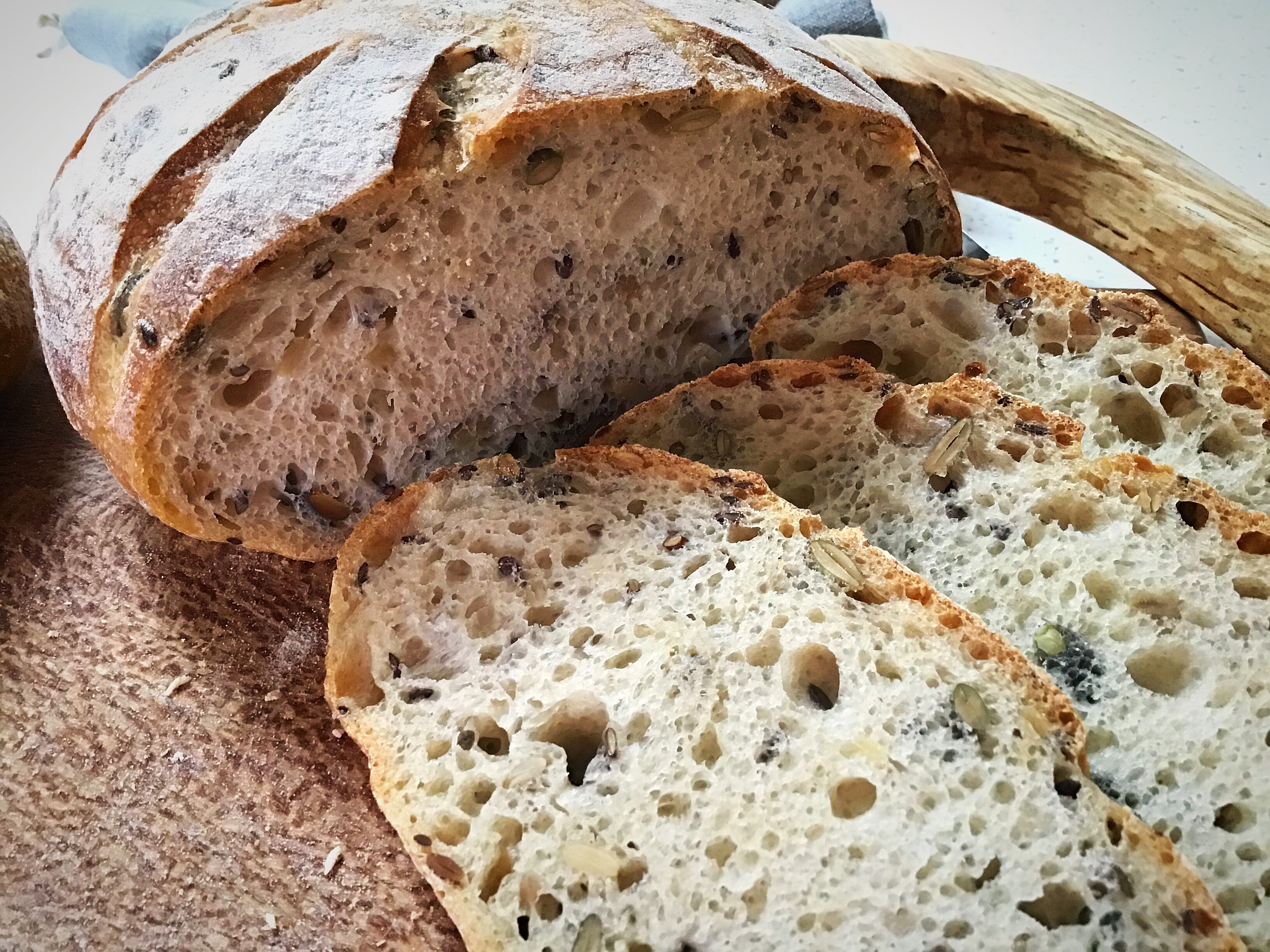
And it tasted great!!!!! I always toast my seeds beforehand which all adds to the flavour.
Khorason flour is quite different. I used a wholewheat khorason flour which has 15g of protein per 100g. The flour is a lot more grainy that the spelt, and it soaks up a lot more water. It can often pull in quite tightly when first mixed into a dough, then loosen up later, so don’t be fooled! I have found that it enhances the flavour of the sourdough quite distinctly and increases the sourness.
Using it for a 100% khorason loaf generates a tight crumb and a denser bake, but it’s so tasty, I recommend trying it.
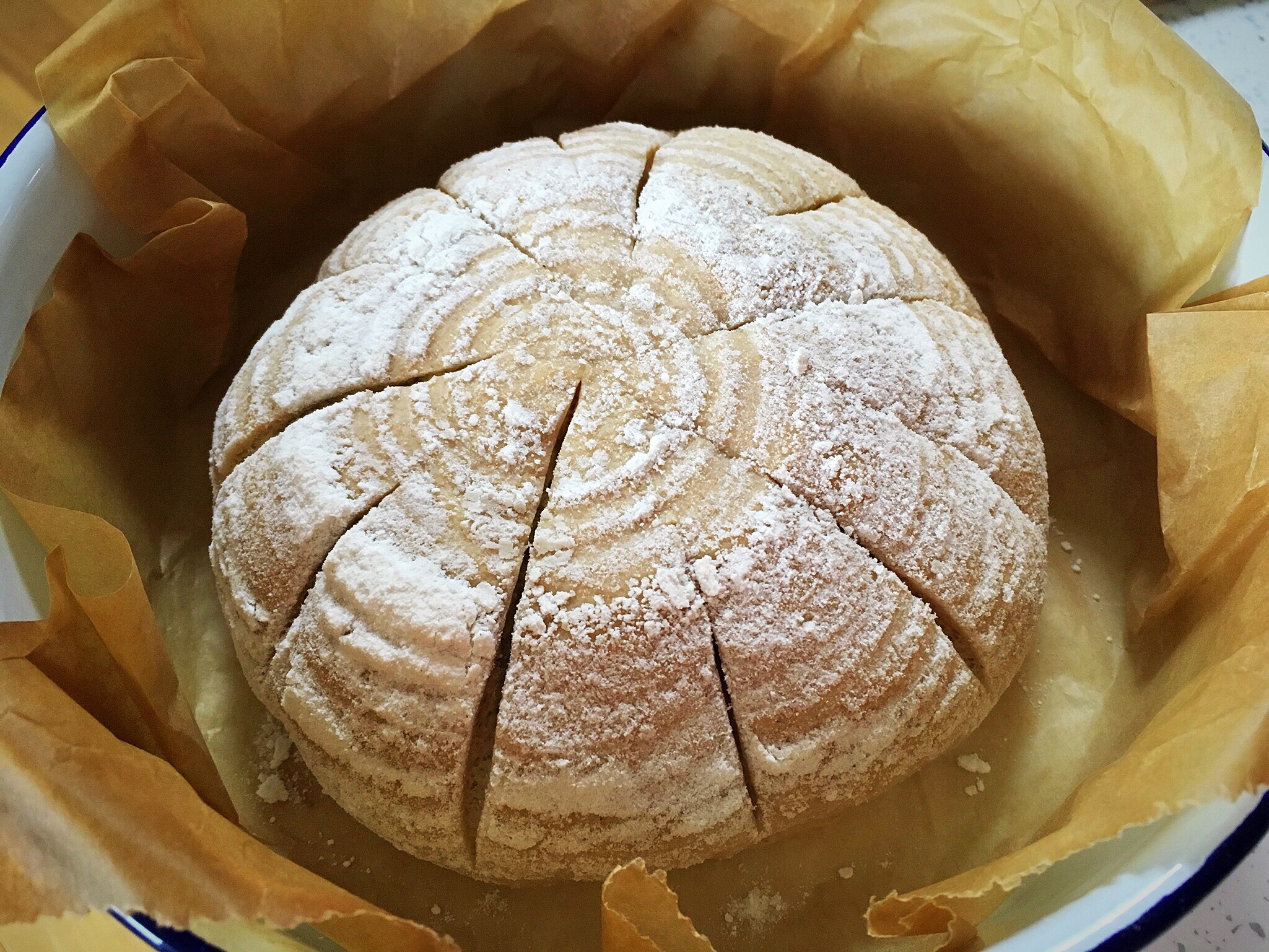
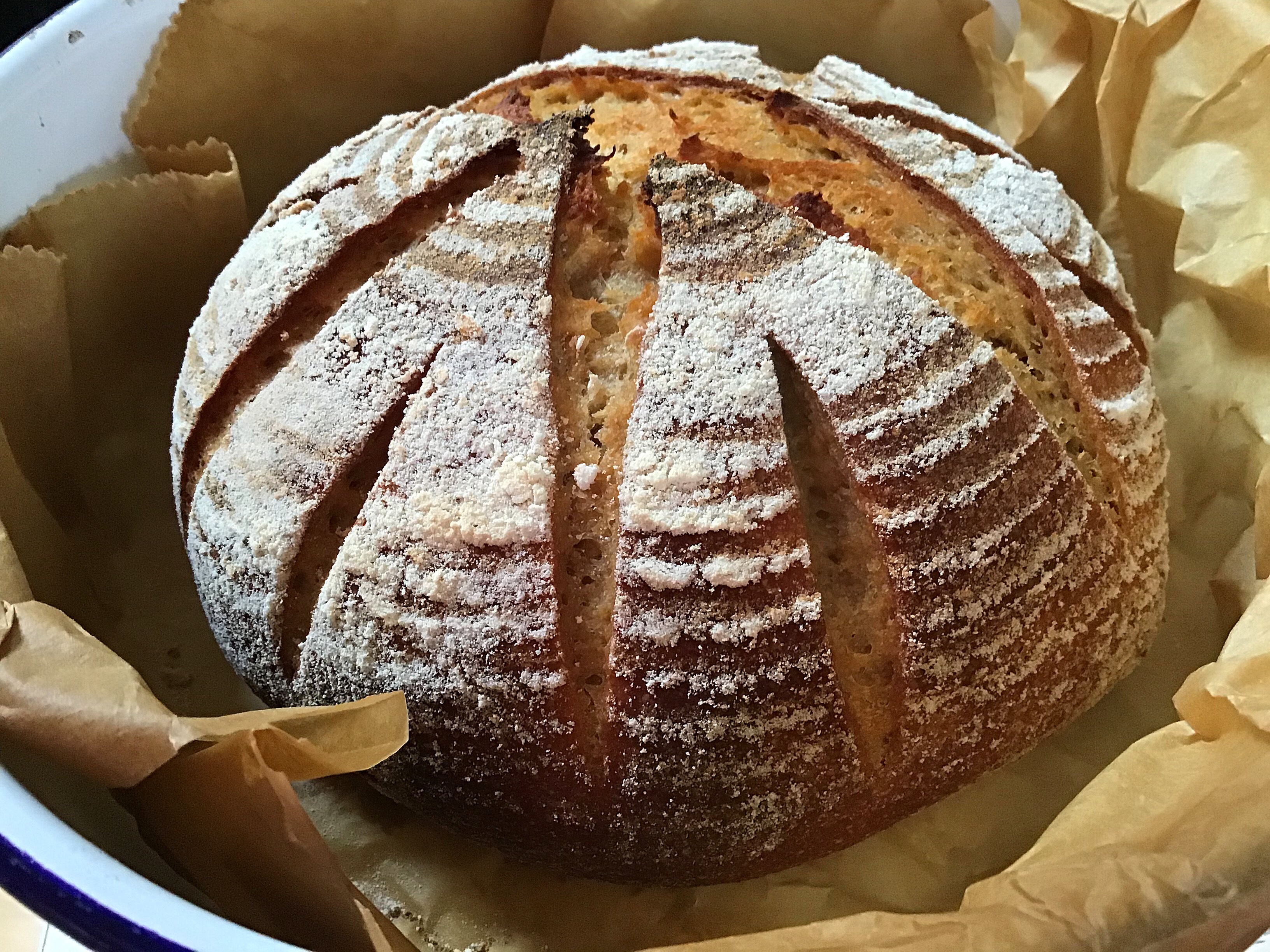
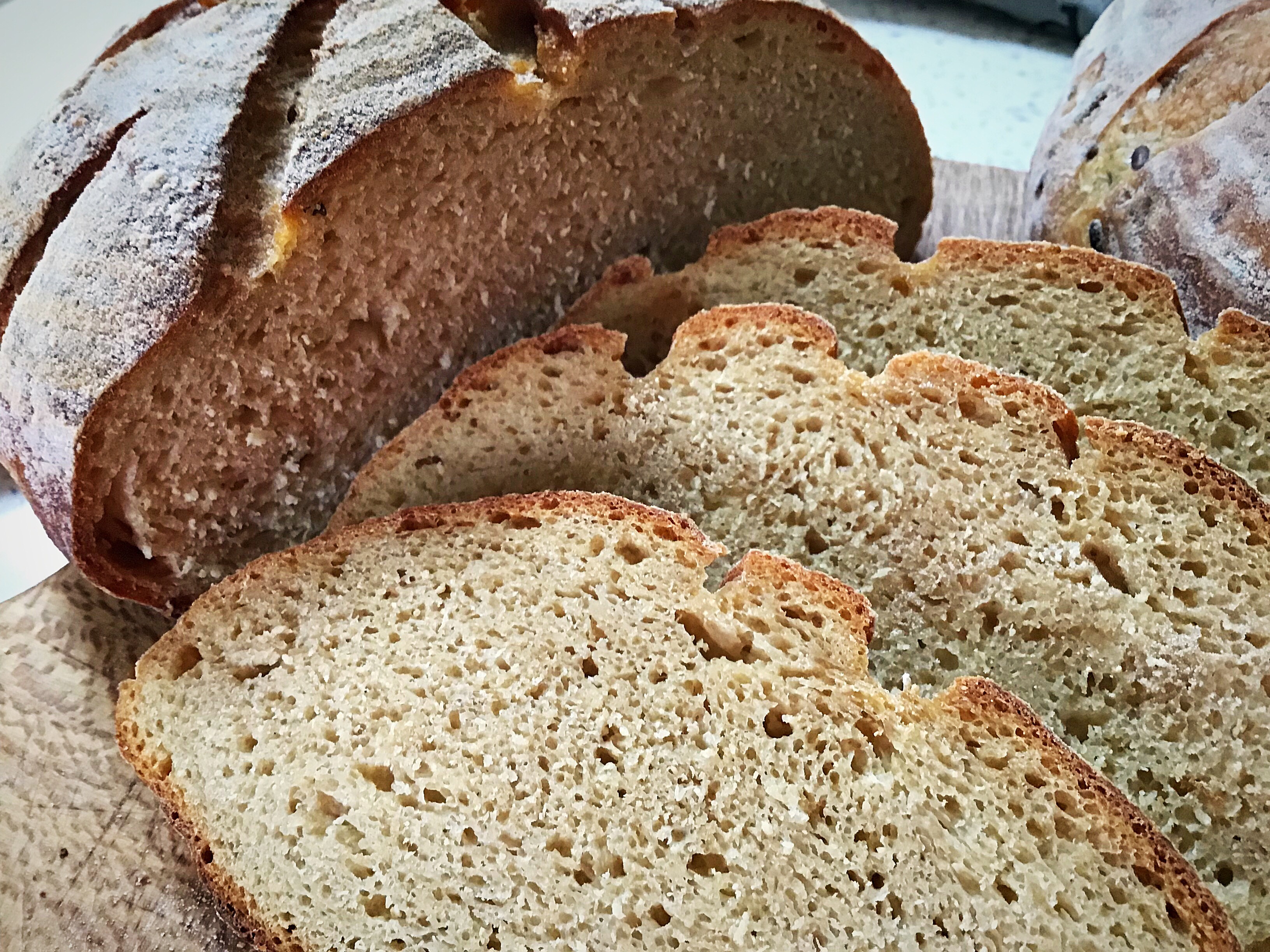
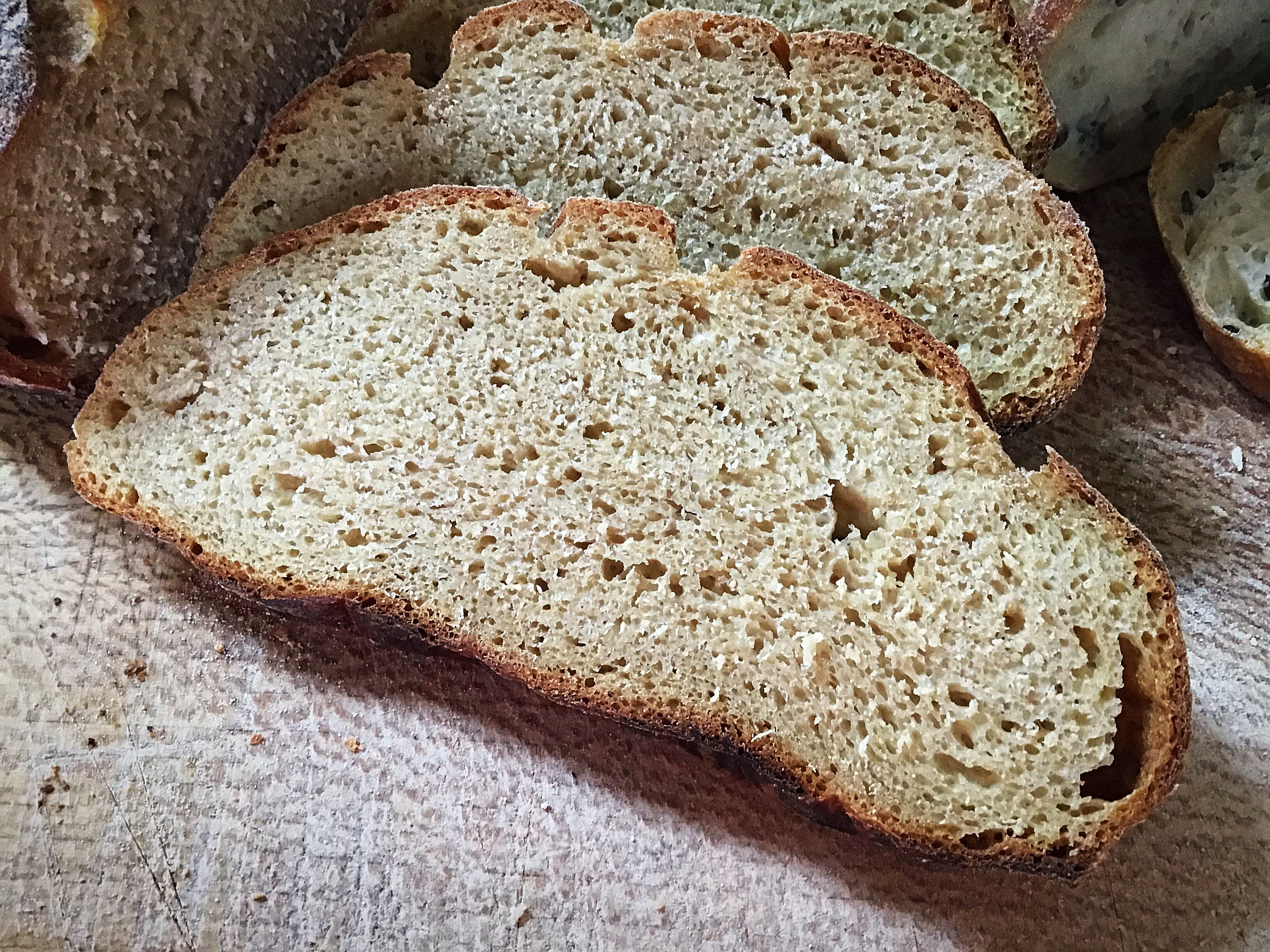
Mixing 50:50 white spelt flour and wholewheat khorason was a real success: the spelt lifts and lightens the khorason, whilst the khorason gives the spelt structure. And it tastes great! it’s still a closer crumb than all white or all spelt, but it’s tasty and lovely which is all that matters right? And the butter doesn’t escape!
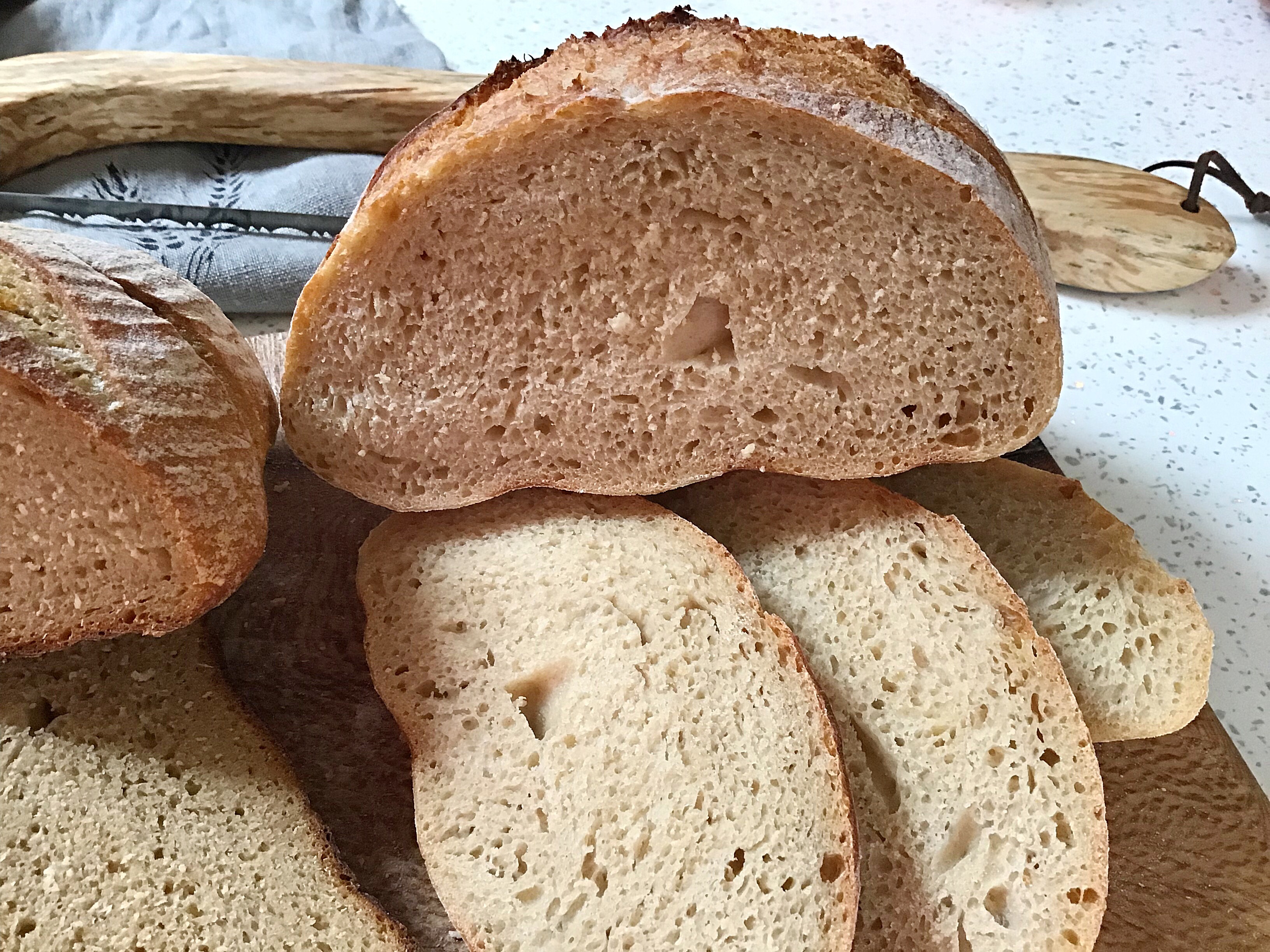
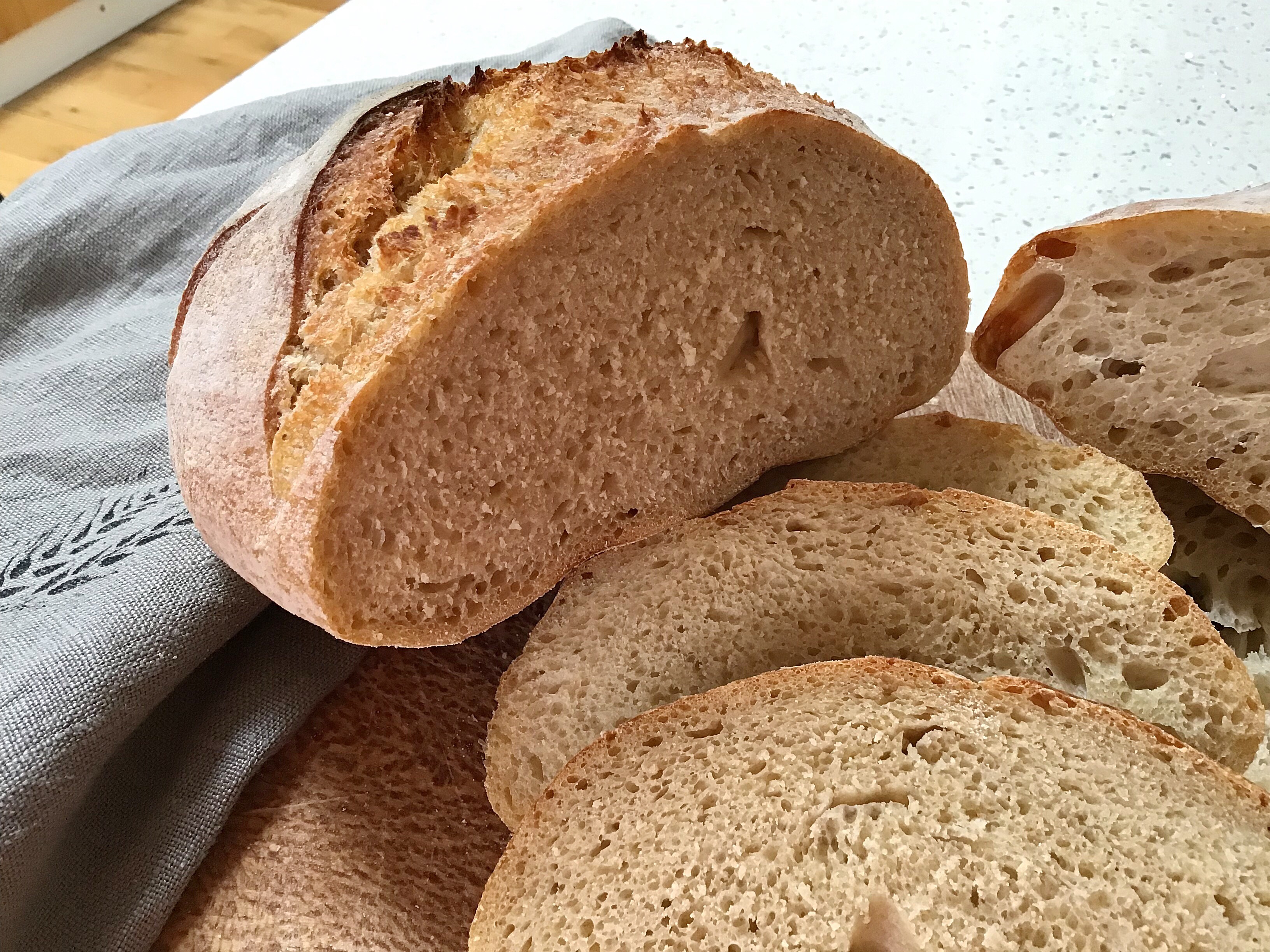
I will be putting videos of making these loaves on YouTube, but all I’ve done is use my master recipe process, all I’ve done is change the quantities, so everything else is the same; please feel free to increase the quantities to make a bigger loaf.
The spelt loaf quantities:
300g white spelt flour
200g water
30g starter
1/2 tsp salt, or to your taste
The seeded spelt loaf quantities:
300g white spelt flour
200g water
30g starter
1/2 salt, or to taste
50g mixed roasted seeds, I use pumpkin seed, sunflower seeds and linseeds
The khorason loaf:
300g wholewheat khorason flour
250g water
30g starter
1/2 tsp salt, or to taste
The spelt & khorason loaf:
150g white spelt flour
150g wholewheat khorason flour
250g water
30g starter
1/2 tsp salt, or to taste
The process: I used the process of my master recipe, find the links to the left, all the way through, and baked in a preheated oven at 220C fan (240C non fan) covered, for 30-35 minutes as required.

Happy baking!
The white spelt flour was from Mathews Cotswold Flours
The khorason flour was from Doves Farm
The starter was always fed and bubbly!

Thank you! I wondered about the different flours requiring differing amounts of water. And neat trick to know that seeds add structure. Looking forward to this weekend.
Great thank you 🙂
Thank you , going to try it soon , which stage I add the seeds ??? Will try the mixing flour ,
Mix it all together at the start 🙂
I’m going to have to get some of the khorosan flour now to try it. It seems my sourdough just keeps evolving.
Thank you for all the hard work you put in to bring us all this fantastic information.
Thank you so much, enjoy playing x x x
I’ve used white spelt and it’s lovely to work with but I have brown spelt which is not as smooth as the white so now so I wonder if that would be better for helping to hold its shape. I’ll have to give this a go.
You can try but wholemeal spelt still isn’t very strong…see how it goes 🙏🏻
Hi, I have yeast at home… can I use that instead of a starter?
Yes..
Hi.
Can I use 250 g spelt, 250g kamut, 50g sourdough and 350g water?
Thank You.
Yes 👍🏻
Hi, as I have the normal khorason flour instead of the whole-wheat one, I was wondering if it would be the same.
I read different reviews about it, someone says it’s a weak flour others say it’s ok for bread baking.
In these recipe would it work?
Also wanted to ask your opinion: I have in the fridge the dough made with white spelt and sunflower seeds but it seems it didn’t rise much during the night. Maybe my starter is too ”young”?
It is two weeks old, but double in 3 hours. Thank you for this wonderful blog and for sharing your experience 🙏🏻🙌🏻
Hi, there is a lot more about these flours coming in my book…but yes, you can use the khorason flour, I’d use it as a portion of a dough though rather than on it’s own.
And your starter sounds fine, the dough may not have risen for other factors…spelt really IS a weaker flour, or temperature might have affected the dough
Thanks a lot for your suggestion. I’ll make experiments with Khorason 👍🏻 I am looking forward to read your book!!
Yeah, maybe it was too hot… and in the end it got over proofed. I live in Menorca and at this time it is already hot in my kitchen. I’ll try the version that you suggest on the blog for warmer places 😉But I won’t give up! Thanks a lot 🙏🏻❤️
Thank you 🙏🏻🙏🏻 definitely keep going!
The best trick for warm weather is to use less starter, that’s what I do 👍🏻👍🏻
Have fun 🌟🌟🌟
Your experiment was terrific and exactly what I was looking for. I am new to sourdough and have had great success with it. I got my starter from a local sourdough baker (Shout out to Gulf Coast Sourdough in Tampa) and have kept it alive now for 4 months. So, I ordered Kamut flour from Montana and the label reads “Kamut Whole Grain Flour” on the bag–they didn’t write “Whole Wheat flour”. Is this whole wheat flour? And I’ve been using organic strong bread flour (12.5%)–can I mix these two flours? I believe your hydration ratio in your Kamut loaf is approx 55% f – 45% water. Thank you for your wonderful article and for your time and attention.
Best Regards!
Hi Matt, yes, what you’ve got is a whole wheat kamut. I would start by sticking to my master recipe quantities and use 400g of your bread flour and 100g of the kamut flour with the usual 350g water and see how it feels and behaves, then build it up from there 👍🏻👍🏻
Hi Elaine, my khorasan loaf is now in the fridge after an overnight rise on the counter. I noticed that the dough more than doubled in volume and the surface had holes / pit marks. Does this mean that the dough overfemented? Thanks!
Hi, no, not necessarily, khorasan flour produces quite a different looking dough, let’s see how it bakes
At which stage do you add the seeds?
Right at the beginning of making the dough
What is your elevation?
Elevation?
Please tell me where I can get a small 17cm banneton like yours. Thank you.
Hi, I buy mine online from various places…what country are you in?
I am in England
Okay, then you can find them on this site, listed as 18cm bannetons https://thebreadcompany.co.uk
You say you used your master recipe but you’ve pre heated your oven?
I made these loaves before I discovered cold baking 😊
Thank you so much for all the fabulous information. It’s been tricky to get definitive answers from people re baking with other flours.
I watched a clip on YouTube regarding working with khorasan. She was saying that for the autolyse stage, it needs about 2 hrs for the gluten strands to develop. Thoughts?
Thanks
Tracey
Thank you 🙏🏻🙏🏻
I don’t do an autolyse stage but yes, after the first mix, a 2 hour rest is useful, for any flour
What kind of starter did you use for these, was it a spelt starter for all?
You can use any starter made with any flour. Mine was white bread flour.